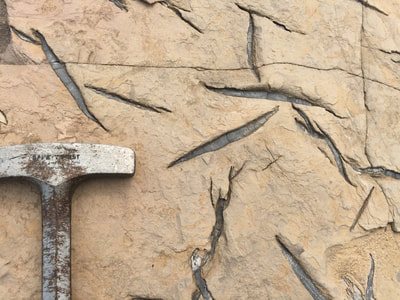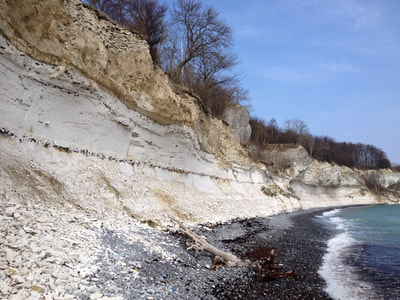|
The Proterozoic World
The Earth is ~4,500 million years old, yet complex life only evolved in the last 600 million years. Why? My research focuses on answering this question by probing the environmental conditions that accompanied early eukaryotic evolution during the Proterozoic Eon. Specifically, I use sedimentological and geochemical clues to reconstruct Earth surface oxygenation, ocean chemistry, and nutrient dynamics. Field and core locations for this work include arctic Canada, arctic Siberia, China, India, Australia, and Mauritania, and analytical methods range from chemical speciation and element abundances to metal isotope geochemistry. |
|
Devonian-Carboniferous Redox Evolution
Despite the evolution of animals in the terminal Ediacaran Period, recent research suggests that Earth's oceans remained poorly oxygenated well into the Paleozoic Era. When, then, did the transition towards a more modern, oxygenated world occur? The geologic record of the Devonian Period provides intriguing clues that lead us to a linkage between land plant evolution, ocean oxygenation, and biotic turnover. Specifically, I am focused on both carbonate and black shale deposits across North American epeiric seas (Williston, Appalachian, Permian, Anadarko, Illinois, and Great basins) in order to decipher the complex redox history of the Middle to Late Paleozoic oceans. |
|
Cretaceous-Paleogene, Pliocene, and Modern Analogue Studies
Ocean redox across Ocean Anoxic Event 2 in Italy and Mexico New proxies for ocean dynamics applied to Cretaceous-Paleogene chalk units of Denmark Metal isotope investigation of modern ferruginous Canyon Lake, Michigan Calibrating paleosalinity proxies in Holocene coastal sediments of North America Geochemistry of ODP sediments from the Pliocene Epoch and modern low-oxygen environments |








